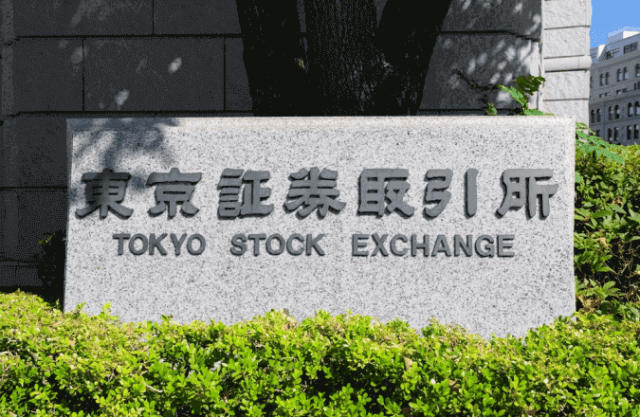What is the VIX? Your guide to trading the CBOE Volatility (VIX) Index

Learn all about the CBOE Volatility (VIX) Index, with information on the index’s history and price journey, trading hours, and how to trade VIX volatility index CFDs with Capital.com.
What is the VIX?
The CBOE Volatility Index – commonly known as the VIX – measures the stock market’s expectation of volatility based on S&P 500 index options. Calculated and published by the Chicago Board Options Exchange (CBOE), the VIX is a real-time market index representing the market’s expectations for volatility over the coming 30 days.
Often referred to as the ‘fear gauge’, traders can use the VIX to gauge the level of risk, fear, or stress in the market when making trading decisions. A higher VIX value may indicate increased volatility expectations, and generally reflects uncertainty or fear in the market. A lower VIX can suggest stability and less stress among traders.
How is the VIX calculated?
The VIX is calculated and maintained by the Chicago Board Options Exchange (CBOE) based on the implied volatility (a measure of the expected future volatility) of options on the S&P 500 index.
The calculation itself involves aggregating the weighted prices of various puts and calls over a wide range of strike prices, focusing on options that are near the money and have short-term expirations. This process extracts a measure that represents the expected 30-day volatility from the options' prices, expressed as an annualised percentage. The formula used for this calculation integrates complex financial models that account for various factors, such as the options’ time to expiration and the distance of strike prices from the current market level of the S&P 500, ensuring a comprehensive snapshot of market sentiment.
History of the VIX
The VIX volatility index was introduced in 1993 by the CBOE in response to the need for a quantitative measure of market sentiment and volatility.
Initially, the VIX aimed to reflect the implied volatility of S&P 100 (OEX) index options. However, it updated the VIX to focus on the broader S&P 500 Index together with Goldman Sachs in 2003, making it the more comprehensive barometer of market volatility we know today.
The VIX played a pivotal role during the financial crisis of 2008 when it surged to, at the time, record levels, reflecting the heightened uncertainty and fear in the markets, and cementing its status as a valuable indicator during times of crisis.
In the years leading up to the Covid-19 pandemic, the VIX often remained at historically low levels. This was possibly driven by factors such as strong corporate earnings and accommodative central bank policies. With the onset of Covid-19 in early 2020, uncertainty shook the markets to their core, and in March 2020, the VIX spiked to record highs, reaching levels not seen since the 2008 financial crisis.
Performance of the VIX in recent years
Prior to March 2020, the all-time highest VIX close was 80.86 on 20 November 2008. But on 16 March 2020, the VIX surged to a record high of 82.69. It’s worth noting here that the highest intraday VIX value on record is 89.53, reached on 24 October 2008 – with the following four highest intraday VIX days being from March 2020.
As markets rebounded in late 2020, the VIX gradually subsided and settled into a range that, while elevated compared to pre-pandemic levels, was notably lower than its peak.
Despite its lower levels compared to the early days of the pandemic, the VIX still spikes in response to uncertainties, demonstrating its ongoing relevance as a gauge of market stress and investor sentiment.
(Past performance is not a reliable indicator of future results)
What factors might affect the VIX price?
The VIX volatility index price can be influenced by a range of factors, from market uncertainty and investor sentiment to major geopolitical events, economic indicators, and financial crises. These can all lead to increased uncertainty, causing the VIX to rise.
Conversely, stable economic conditions and positive market news tend to lower the VIX, as such events can reduce traders’ fear of volatility.
Shifts in market dynamics, such as rapid changes in interest rates or significant moves in the major indices, can also impact the price of the VIX volatility index. On top of this, trading volumes and liquidity in the options market, where the VIX derives its value from S&P 500 index options, can further affect its price.
What are the VIX trading hours?
VIX futures, which are traded on the Chicago Board Options Exchange (CBOE), typically follow a nearly 24-hour trading cycle, five days a week.
How to trade the VIX with Capital.com
There are a couple of ways you can trade the VIX with Capital.com.
We offer two VIX ETFs you can trade via CFDs: the ProShares Ultra VIX Short-Term Futures ETF, and the ProShares Short VIX Short-Term Futures ETF. Trading with CFDs is a high-risk, complex form of trading.
We also offer our own 'spot' VIX price (or 'undated' VIX) which is priced from VIX futures, but has no expiry. In this case, the price slowly moves between two of the VIX futures. Again, you can trade this market via CFDs, however, we don't offer any CFDs on any actual VIX futures (i.e., those that expire/settle).
If you choose to trade CFDs on the VIX, you can follow its performance live in USD with the comprehensive VIX volatility index price chart.
Need more support? Try our step-by-step indices course to guide you through the basics to the advanced concepts.
Why trade the VIX with CFDs on Capital.com?
As well as being able to go short and long on the index, trading the VIX volatility index on Capital.com means you’ll get access to an easy-to-use platform, 24/7 support, fair and transparent pricing, and award-winning educational content to help enhance your trading knowledge.* You’ll also be able to trade on elite third-party software such as TradingView and MT4, and refine your strategies with our risk-free demo account.
Please note that trading via financial derivatives is a high-risk, complex form of trading.
*Awarded best-in-class for education at ForexBrokers.com’s 2024 Annual Awards
FAQs
Can you invest in the VIX?
Direct investment in the VIX itself is not possible as it is an index, not a tangible asset. You can only invest in the VIX volatility index indirectly through various financial products that track its performance. Traders can gain exposure to the VIX movements through VIX futures, options on VIX futures, and a variety of exchange-traded products (ETPs) that mimic the behaviour of the VIX. On Capital.com, there are numerous ways you can trade on the VIX via financial derivatives such as CFDs. These are complex, and highly risky ways of trading.
What is the VIX index?
The VIX is a measure of expected market volatility. It reflects the market’s consensus on future price fluctuations, primarily in the S&P 500 index. When the VIX is low, it indicates low expected volatility, suggesting a calmer market. Conversely, a high VIX suggests increased expected volatility and market uncertainty. Traders can use the VIX as a gauge to assess risk and make decisions about portfolio management and hedging strategies.
What does it mean when VIX is high?
A high VIX can signify elevated levels of market uncertainty and expected price swings in the near future, typically indicating increased volatility in the stock market. This can be driven by various factors such as economic uncertainty, geopolitical events, or unexpected news.
Should you buy when VIX is high?
Ultimately, whether you decide to buy or sell when the VIX is high depends on your risk tolerance, trading goals, and experience in navigating turbulent markets. While it may seem counterintuitive, some experienced traders view high VIX levels as buying opportunities, as it could mean that stocks are undervalued due to fear-driven selling.
However, it's crucial to approach this strategy with caution and comprehensive research. High VIX levels can also signify ongoing market turbulence and potential for further losses, so it’s essential to have a diversified portfolio and robust risk-management strategy in place when considering buying during periods of high volatility, especially if you’re trading with high-risk, complex instruments like CFDs.
Why is the VIX important for traders?
The VIX volatility index is important for traders as it can provide insights into future market volatility and sentiment in the S&P 500. A rising VIX can indicate increasing market uncertainty, presenting both opportunities and risks. Traders use it to foresee price stability and potential trend reversals. Additionally, a high VIX can signal the need for adjustments in trading strategies and risk management. The VIX can also serve as a hedging tool, with products like VIX futures and options helping to protect against market downturns.
Is the VIX a stock index?
No, the VIX is not a stock index. The VIX measures the market’s expectation of future volatility based on options prices of the S&P 500 index. Unlike stock indexes – that track the performance of a group of stocks – the VIX is a volatility index. It essentially provides an insight into investor sentiment and expected stock market fluctuations over the next 30 days, rather than tracking the value of a set of stocks.
Is the VIX in USD?
Yes, the VIX is denominated in US dollars (USD). The VIX volatility index itself represents a theoretical expectation of volatility calculated from the prices of S&P 500 index options, which are also priced in USD. When you trade VIX-related financial products via futures or options, these transactions are also conducted in USD.
Visit our other complete guides

How to trade Japan 225
